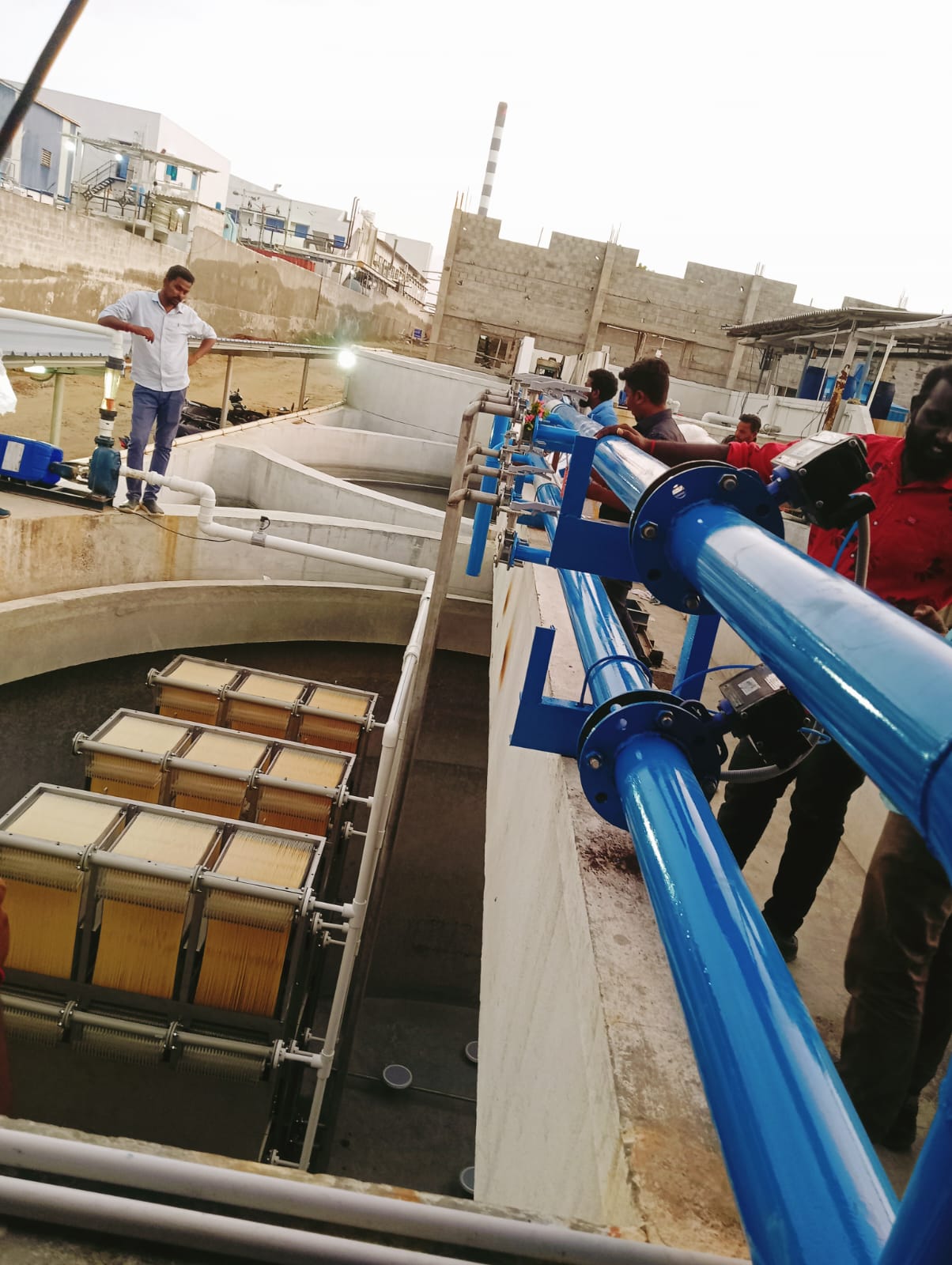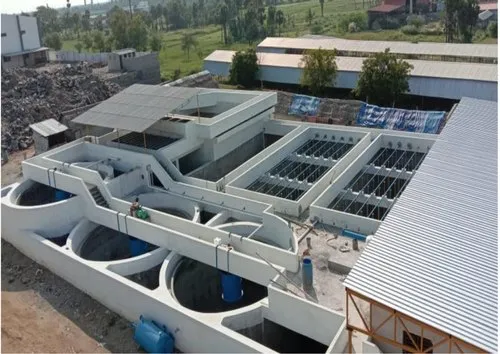WASTEWATER TREATMENT PLANT DESIGN MODERN & SOPHISTICATED TECHNOLOGY
Since a wastewater treatment plant is a magnanimous and huge-scale deliverable, we send in our best design and technical team to execute it as well as ensure that all the parameters of the plant are according to the discussed plan and excel in quality. The solution comprises multi-discipline plant design applications covering:
The site, process, environment, architectural, instrumentation and control, electrical, mechanical equipment, mechanical and structural piping, supports, structural steel, and reinforced concrete.
Ecologic India Water Solutions is engaged in providing turnkey project services, turnkey solutions, turnkey installation services, turnkey design services across the nation. Assisted by our team of professionals, we work with our clients to determine the most effective design as per the client’s requirement. Our turnkey solutions and turnkey project service are accomplished in a well-defined and planned manner.

MULTIPLE EFFECT EVAPORATOR WITH ATFD

A falling film evaporator is an industrial device to concentrate solutions, especially with heat-sensitive components. The evaporator is a special type of heat exchanger. The falling film principle requires an even distribution of the feed liquid. To achieve this distribution, one or more distribution trays are in the top head of the evaporator over the complete tube sheet. Our proven distribution devices make sure that the inner surface of each individual tube is properly wetted. The liquid film moves down the tubes by gravity force. Heat applied through the tube wall effects boiling-off the light fraction from the film. The picture shows a co-current operating evaporator with vapor and liquid leaving the bottom of the evaporator into the separator vessel.
Wet product in form of slurry (range from 30 to 50% w/w) fed through the inlet nozzle is conveyed steadily by the rotor blades along the heated dryer wall in a thin film (with the help of steam, hot oil, or any heating media), normally several millimeters thick, preventing buildup and continuously exposing every particle of the product to the heated surface. Vapors pass counter-currently to the product flow and exit the dryer through the feed nozzle, as configured above. Moisture levels from a few tenths of a percent up to 5%+ can be achieved. Residence time is typically controlled as per requirement. Our thin-film dryers are widely used throughout the process industries to convert liquids, slurries, and pastes to free-flowing solids in continuous, single-pass operation. Our Thin-Film Dryers have a short residence time and are very effective in processing heat-sensitive products, due to low "hold-up" and self-cleaning heating surfaces.
TORAY'S ADVANCED MEMBRANE SEPARATION TECHNOLOGY AND NANOTECHNOLOGY CREATE BETTER MBR MODULES.
The "MEMBRAY" submerged flat sheet membrane module, when used as a component of a membrane bioreactor (MBR) system, effectively removes suspended solids. This innovative microfiltration module in a plate-and-frame configuration with flat sheet membranes was developed thanks to over 25 years of experience in high-quality membrane products and our non-compromise R&D, manufacturing, and application expertise.

MBR technology enhances wastewater treatment efficiency
- Using membranes to separate sludge ensures much higher quality for treated water free from suspended solids. Combination with RO membranes allows producing water quality as good as potable water.
- Membranes can retain activated sludge at high concentrations, allowing BOD as well as nitrogen to be removed more efficiently.
- Unique membrane configuration having an immense number of minuscule pores delivers stable high-water permeability with minimal clogging and higher permeated water quality.
Smaller footprint
- The module can be submerged directly in an activated sludge tank for combining biological treatment and membrane separation. It eliminates the sedimentation or sludge concentration process.
- More effective biological treatment allows activated sludge tank size to be reduced.
Fewer chemical cleaning requirements and coarse screen pretreatment
- The plate-and-frame configuration that employs flat sheet membranes is inherently stronger against fouling than the hollow fiber membrane configuration. Therefore, it results in fewer chemical cleaning requirements.
- Reduced module fouling from human hair and other obstructive substances allows coarse screening as a pretreatment process.
The "MEMBRAY" module configuration comprises an element block and an aeration block. The element block contains several membrane elements stacked at equal intervals, each of which has flat sheet membranes attached on both sides of a supporting panel. Each element is connected via a tube to a permeated water manifold. The aeration block consists of air diffusers used to supply air.

Guaranteed high water permeability and high effluent quality.
Many 0.08-micron pores on the membrane surface effectively eliminate 0.1 micron+ particles to improve effluent quality.
Uniform pore size results in consistently high permeability with minimal pore clogging.
Unique membrane structure
Numerous small-diameter pores are distributed evenly throughout the membrane surface with a narrow diameter distribution. This structure ensures higher treated water quality and minimizes membrane fouling and pore clogging for consistently high-water permeability.
Sludge water is a product of mechanical, biological, and chemical treatment of wastewater in wastewater treatment plants, food and chemical industries, and other sectors of human activity. Our dewatering screw press is used to thicken sludge water to 20% dry-matter content. In terms of quality, this equipment surpasses traditional sedimentation sludge removal and other dewatering technologies. This dewatering/thickening screw press has been designed primarily for wastewater treatment plants but can also be used for thickening both industrial water and wastewater in food processing operations. If a dewatering press is already incorporated into the new WWTP design, costs related to the construction of sedimentation tanks are eliminated as this equipment can also be used for thickening secondary sludge directly from activation.
APPLICATIONS
- All range of industries ETP & STP
- Faecal Sludge management
- Primary sludge and biological sludge dewatering
- Wastewater treatment plants - New/Existing
Benefits for Customers:
- It is an efficient & versatile press style with resolution.
- No need for pre-dewatering.
- Reduces sludge volume with typical dry solids content of 20%.
- Solids capture over 95%, reducing filtrate treatment cost.
- Adaptable to local requirements and conditions, with multiple units of different sizes available.
- Automatic washing system, reducing operational downtime.
- Low footprint, low flocculent consumption, low energy consumption, low maintenance — how it can save your costs and enhance your operations.